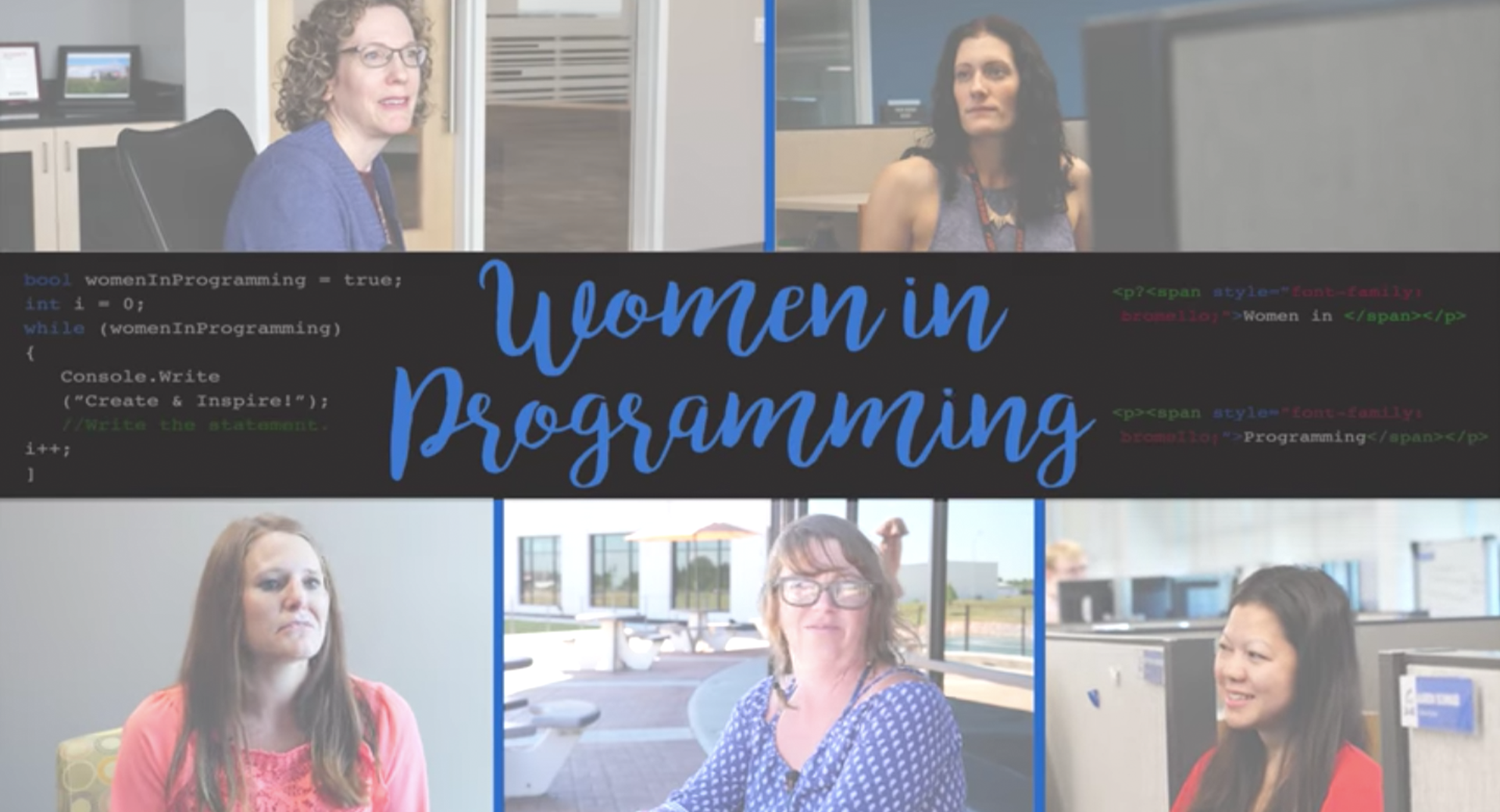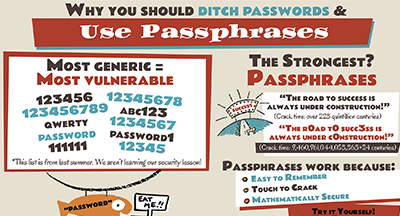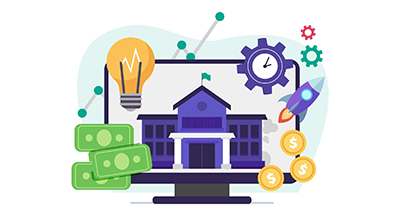"Why Not Me?": The Small-but-Strong Female Presence in Computer Science
|
Caroline Gilchrist Programming Presswoman |
Sunlight streams through the third-floor windows at Skyward World Headquarters. Inside cubicle after cubicle, software engineers tap away at their computers, concentration etched on their faces. These software engineers have much in common. They’re skilled. They’re hardworking. They're . . . male.
Unfortunately, the latter is indeed a common trait among our programming workforce. Only 17 percent of Skyward software engineers are women—but as low as that number is, it’s actually pretty typical for a software company in the United States. Despite women earning nearly 60 percent of all undergraduate degrees, they account for only 19 percent of computer and information science degrees and likewise hold 19 percent of jobs in the field.
This gender imbalance has been an ongoing issue for decades. But before diving into its implications and hearing the thoughts of a Skyward female programmer, let’s rewind the tape. As they say, the beginning is a good place to start!
A Quick History of Programming
Believe it or not, computer science hasn’t always been male dominated.During World War II, when many men were abroad, women took on a variety of wartime jobs. Computers (people who computed calculations) were hired by the military to calculate ballistics trajectories, or the angle soldiers should fire at based on factors like distance and weather. By hand, these calculations were so slow and complex that John Mauchly and J. Presper Eckert designed a machine called the ENIAC, which they believed could produce quicker numbers. To perform the calculations with this new machine, they employed a handful of the female computers.
Yes, these women were the world’s first programmers. They encountered the cutting edge and quickly discovered its blade was sharp; no programming tools or languages existed, so the women had to figure everything out for themselves. Yet they successfully programmed the ENIAC to run ballistics trajectories in seconds—and consequently paved the way for programmers and software engineers to come.
After the war, some men began going into programming as well, though the work was still considered low and “stereotypically female.” Into the 1960s and ‘70s, women continued to make up a large percentage of the computing workforce. But that percentage soon began to decline. When home computers gained popularity in the 1980s, advertisements largely targeted males. The computer became thought of as a “boys’ toy”—a stereotype that was only reinforced in popular culture with movies like Weird Science and Revenge of the Nerds. Families were much more likely to buy computers for boys than girls, which gave men a significant advantage when it came to computer science courses. Though some women entered college with the intent to study computers, very few graduated with a degree in that discipline.
By the turn of the century, women had been all but pushed out of computer science.
The Hurdles of Expectation and Bias
Today, enrollment in high school math and science classes is split evenly between males and females, and standardized test scores are fairly equal. While this is a fantastic step in the right direction, the fact remains that girls simply aren’t pursuing STEM beyond high school. While the number of women graduating with STEM degrees has been slowly on the rise—from 140,000 in 2009 to 200,000 in 2016 (the most recent numbers available)—a significant gender gap remains, particularly in computer science. As Carol Tang, head of the California Girls in STEM Collaborative, put it, “What all this means is that girls can do it, but they’re choosing not to.”One study shows that women may in fact be better coders than men—so long as no one knows they’re women. GitHub, a software community where users collaborate on coding projects, allows non-users to submit coding solutions to users’ problems. These solutions are then either accepted or declined. This study found that when women’s gender was concealed, their solutions were accepted at a higher rate than men’s for every programming language. But when their gender was disclosed, women’s acceptance rate dropped significantly (from 72 to 62 percent).
This bias is devastating as it both discourages girls from entering the field and inhibits the progress of those who do. Moreover, its effects reach beyond the workplace; the lack of diversity in programming affects the evolution of technology, which in turn affects virtually every aspect of our lives. What new ideas and solutions might the world be missing out on? What new perspectives could women bring to the technology table?
Wisdom from a Skyward Female Programmer
We asked Kathy Yang, one of the 28 female software engineers who shape Skyward solutions, to share her thoughts on gender imbalance in the field. Here’s what she shared.I knew programming was a male-dominated career when I was considering it, but that wasn't something that concerned me. I entered the field with the mindset that if others can do it, why not me?
I do notice that women, both young and old, find it fascinating when I tell them I’m a programmer. They think I must be smart, or at least smarter than them, but I would not agree or believe that I am. Programming is learned, just like everything else. It takes time and practice to learn the art and to build the foundation for programming.
I believe that a person's growth and achievements are relative to what they put into it. Great programmers are not gender based. Great programmers are those who are humble enough to listen, learn, and then deliver beyond expectations most of the time.
Kathy is hopeful that more girls will start to enter the field—but, she says, part of the responsibility falls to us.
All of us are exposed to technology in one way or another, which allows us to use the tools that are built by developers. It's going to become more natural that girls will develop an interest in exploring the field.
I think we should stop associating programming as a field that is male dominated and shift the perception. Let's promote programming as a field that delivers great opportunities and adventures and let women discover the wonders of programming.
Her advice for girls interested in pursuing computer science?
Believe in yourself and build that confidence through experience and knowledge. Building one's knowledge is a lifelong journey, so appreciate and enjoy the process. Respect others and learn from them. Everyone has something to share that you will not know.
Women Belong
As Kathy’s colleague, Skyward software engineer Karen Bezella-Bond, put it, “At its heart, I would say that computer programming is improving people’s lives and filling human needs. And so, in that sense, it’s not all that different from a lot of female-dominated professions, like teaching or nursing.”Women belong in this profession; they have since its very dawn. It’s time to remind women of their potential—to help them understand that, no matter the bias and stereotypes, programming is a career in which they can find fulfillment and success. It is not a man’s job. It is a job for passionate, patient problem solvers—qualities women may possess more than anyone.
Follow-Up Resource: Women in Programming: A Skyward Culture Showcase
Want to hear more from Kathy, Karen, and other Skyward female programmers? Check out this video to hear their thoughts on stereotypes, inspiration, and the value of a career in coding.Would programming be a good fit for you? Take our EdTech Careers Quiz to find out!
Thinking about edtech for your district? We'd love to help. Visit skyward.com/get-started to learn more.
|
Caroline Gilchrist Programming Presswoman |

 Get started
Get started





